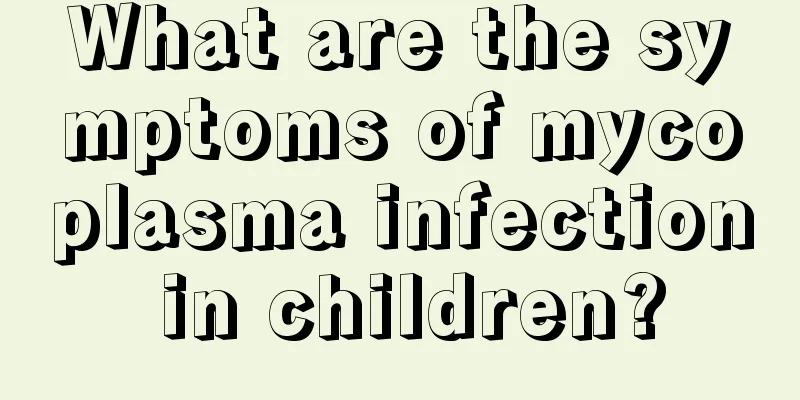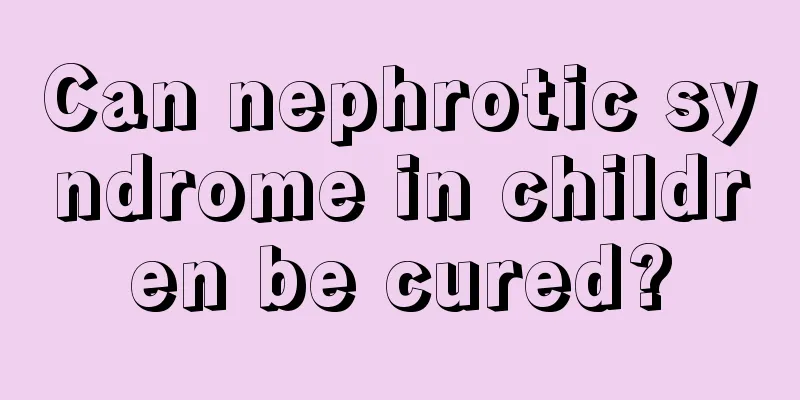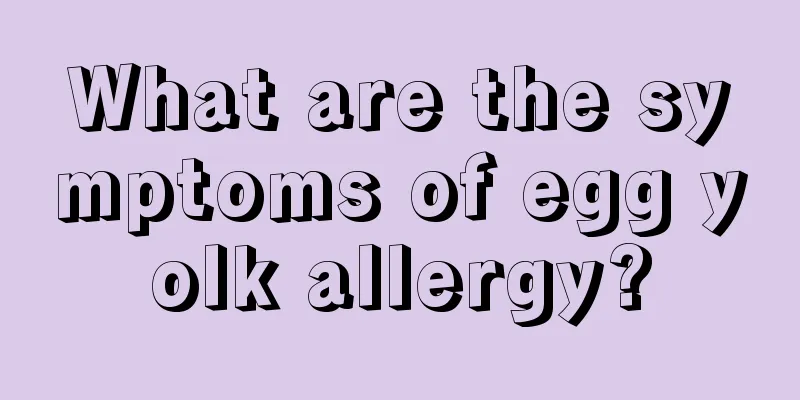What are the symptoms of mycoplasma infection in children?

|
After the microorganism Mycoplasma enters the human body, it usually does not cause disease immediately. There is usually an incubation period, and then the infected people will show some symptoms, including cough, general discomfort, loss of appetite, difficulty breathing, lung disease, etc. 1. Symptoms of mycoplasma infection in children Mycoplasma pneumoniae does not cause symptoms immediately after entering the child's body, but only causes symptoms after a latent period of about 2-3 weeks. The main symptoms of children include fever, headache, chills, cough, fatigue, general malaise, and loss of appetite. 1. Cough: In the early stage, children cough with little sputum and it is a dry cough. Later, it gradually turns into a stubborn and severe cough accompanied by a small amount of mucous sputum, especially at night, which is a bit like whooping cough. Infants and young children present with wheezing and difficulty breathing. About 3%-10% of them can develop into mycoplasma pneumonia. Some children do not have obvious cough, but mainly have high fever, chills and sore throat symptoms. 2. Lesions of other organs: Mycoplasma pneumoniae can also cause lesions of other systems and organs, such as measles-like rash, myalgia, migratory joint pain, liver function damage, hemolytic anemia, meningoencephalitis, myocarditis, pericarditis, nephritis, etc. 2. Causes of Mycoplasma Infection in Children Among pathogenic mycoplasmas, Mycoplasma pneumoniae causes pneumonia, while Mycoplasma hominis, Ureaplasma urealyticum and Mycoplasma genitalium mainly cause urogenital tract infections. 1. Mycoplasma pneumoniae: It is a pathogenic microorganism whose size is between bacteria and viruses. Mycoplasma infection is mainly transmitted through respiratory droplets. It can occur all year round, but is more common in autumn and winter. Mycoplasma pneumonia is also known as primary atypical pneumonia. Mycoplasma pneumonia can occur throughout the year, but is more common in winter and may cause small epidemics. Mycoplasma encephalitis is a common type of pneumonia among preschool children and young people. Mycoplasma pneumonia is mainly transmitted through droplets. Healthy children can be infected by inhaling oral and nasal secretions sprayed out when patients cough or sneeze. The incubation period is relatively long, up to 2-3 weeks. Although mycoplasma pneumonia has a long course, severe lung lesions, and slow inflammation absorption, the prognosis is good in most cases and there are few complications. 2. Mycoplasma genitalium: Mycoplasma genitalium infection is a newly identified sexually transmitted disease in recent years. Newborns are generally infected through the mother's reproductive tract during delivery, mainly causing conjunctivitis and pneumonia. 3. Mycoplasma infection inspection method: 1. Routine blood test: Peripheral white blood cell count is generally normal, with an increase in eosinophils. 2. Direct smear microscopy: Take specimens from pharyngeal secretions, sputum, respiratory membranes or other parts for smear. 3. Rapid antigen test: Monoclonal antibody direct immunofluorescence method is often used to detect Chlamydia in specimens. Mycoplasma infection inspection matters needing attention: 1. Mycoplasma antibody testing is the main means of diagnosing mycoplasma infection, but it must be combined with the clinical characteristics of the child's disease. Mycoplasma infection cannot be confirmed solely based on a positive antibody test. If the child's condition does not improve after 3-5 days of mycoplasma treatment, the diagnosis should be considered incorrect and the doctor should be given timely feedback on treatment information. 2. If the child has an allergic constitution, such as severe eczema when he was a child, recurrent urticaria, allergic rhinitis, etc., if the child coughs for more than a week after a cold and does not improve or has wheezing, you should highly suspect the possibility of asthma or allergic cough. Don't take antibiotics blindly. 3. Mycoplasma infection does not tend to recur, and the course of treatment with macrolide antibiotics is sufficient for 2-3 weeks, and it does not require continuous medication. Take 3 days and stop 4 days, or take 5 days and stop 5 days (that is, take three days and stop four days, or take five days and stop five days. One course of treatment should not exceed one week. Then use one of the methods provided above.) Do not extend the treatment time, otherwise long-term medication will bring many side effects. |
>>: Why does a child blush? What are the countermeasures?
Recommend
What should I do if children accidentally ingest desiccant?
In life, for children, puffed food is incomparabl...
From whom does the daughter inherit more genes?
Children all have certain genes, and these genes ...
Can mental retardation be cured? Introducing scientific therapy!
The so-called mental retardation usually refers t...
My hands shake when my baby cries
Babies will cry when they are young, whether they...
Causes and treatments of baby's rhinitis cough
Nowadays, the incidence of baby rhinitis and coug...
At what age do children's teeth begin to change? What should we pay attention to when children’s teeth are changing?
Tooth replacement is a process that children must...
What is the reason for the baby to have green stool after drinking milk powder?
When feeding their babies, parents will add some ...
Clinical manifestations and treatment of ventricular septal defect in babies
Ventricular septal defect is a common congenital ...
What causes vascular malformations in babies?
For many children, some diseases are more common ...
Treatment of mild anemia in children
Anemia in children is quite serious, but if it is...
Why do newborn babies have yellowing white eyes?
Many parents will find that the whites of their c...
Is it normal for a child to change teeth at the age of 6?
It is a normal physiological phenomenon for child...
What are the consequences of a child choking on water?
Children are playful and tend to be careless in d...
Treatment of fever and cough in children
Children's physical health is what parents ca...
What are the causes of children’s foot odor?
It is very common for children to have smelly fee...









